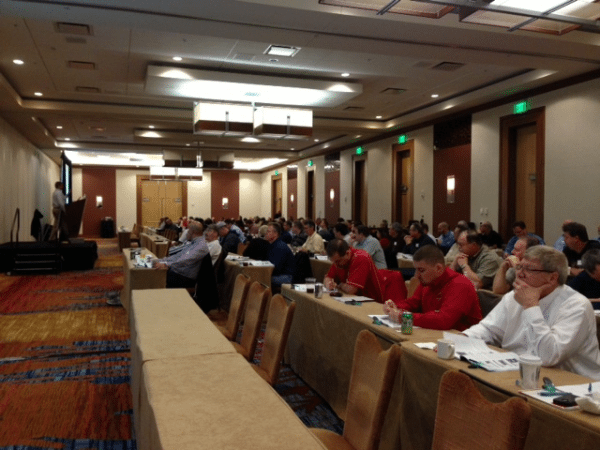
For starters, I want to apologize for missing a day of blogging last Thursday. I attended a Heritage RCRA refresher course in downtown Indianapolis and was without internet for most of the day. On the plus side, attending the course gave me ideas for several different blog posts!
Over the coming weeks, I will be singling out some of what I learned and sharing it on here. To begin, I will go over the basic federal requirements set forth by RCRA. It is always important to remember, however, that each state likely has additional requirements that must be met.
The first thing you will want to do is make some basic determinations. On an ongoing basis you should be asking and answering the following questions:
- In relation to identifying waste streams –
- What are all the wastes being generated at my facility?
- What are the different departments generating?
- In relation to hazardous waste determination –
- According to the regulatory definitions, which of the wastes being generated are classified as hazardous?
- In relation to determining regulatory categories –
- How much waste do you have on site and what is done with it? (see form 8700-12)
Next, you will want to make sure your containers are up to standard. It must be ensured that containers are:
- In good condition (not rusty, no corrosion, no leaking)
- Compatible with the waste (you want to make sure the waste will not react with the container)
- Labeled or marked “hazardous waste”
- Marked with an accumulation start date
- Kept closed (as a rule of thumb this means you could tip it over and it wouldn’t leak)
- Managed to avoid damage and releases
- Kept free of incompatible wastes; incompatible wastes must never be placed in the same container
The third thing to check is that you are following regulations regarding accumulation areas. For this section you will need to make sure:
- Ignitable and reactive wastes are at least 50 feet from the property line
- “No Smoking” signs are posted
- Incompatible wastes are separated or protected from each other
- Emergency equipment is available
- There is adequate aisle space maintained (at least 2½ feet)
Additionally, someone needs to:
- Inspect container accumulation areas weekly
- Inspect emergency equipment at least monthly
- Make shipments every 90 days if you are a large quantity generator
- Make shipments every 180 days if you are a small quantity generator
Lastly, you must follow the compliance documentation rules. These rules include:
- Having a contingency plan
- Having personnel training program and records
- Documentation of inspections
- Manifests and LDR forms
- Biennial Reports
- Waste analyses/determinations
- Documented waste minimization program on site
Remember, these guidelines are just a starting point. To ensure compliance you must look into all regulations as they apply to your business, both at federal and state level. Keep checking the blog in the coming weeks for more information about RCRA.
More News From Heritage
-
1/7/25
Navigating e-Manifest: What You Need to Know About Hazardous Waste Compliance
Learn about the e-Manifest Third Rule changes that begin January 22, 2025
-
12/23/24
Wreaths Across America 2024
This year, through collective effort and heartfelt generosity, we sponsored 727 wreaths and transported two truckloads of wreaths across the country.
-
12/2/24
Heritage Environmental Services Announces Rachel Evans as Chief Human Resources Officer
Heritage Environmental Services announced today that Rachel Evans will join the organization as Chief Human Resources Officer.
-
11/26/24
Honoring Teresa Wade: A Legacy of Dedication to Wreaths Across America
Celebrate Teresa Wade's legacy at Heritage Environmental and her dedication to Wreaths Across America. Learn her story and how you can honor veterans
-
11/14/24
Bright Futures Begin Lead-Free: Reducing Lead Exposure Together
Learn about lead decontamination, disposal processes, and join us in creating a lead-free future.
-
11/11/24
Celebrating Our Veterans at Heritage Environmental Services
-
10/31/24
Heritage Environmental Services Secures Commercial Permit Status for Orange, TX Incinerator
Learn more about Heritage Environmental Services securing a commercial permit for its Orange, TX incinerator, expanding waste disposal solutions.
-
10/14/24
Heritage Environmental Services Announces Timothy Thomas as Chief Operating Officer
Heritage Environmental Services (“HES”), an EQT Infrastructure portfolio company, announced today that Timothy Thomas will join the organization as Ch








